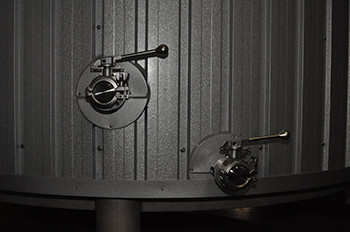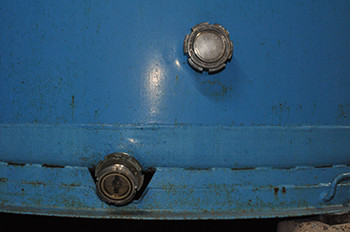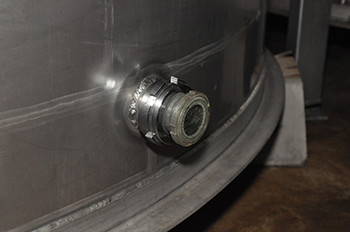Nomi・nomi-kuchi
- 【English】
- Spigot or bung for sake tank
- 【Japanese】
- 呑・呑口
Most tanks for seishu have an aperture for filling and removing sake near the bottom. This aperture is called nomi ana, “nomi hole”. The closure used to stop these holes is called nomi-kuchi or simply nomi (呑). There are usually two holes, the higher one called uwa-nomi (upper nomi), and the one located about 15cm lower and known as the shita-nomi (bottom nomi). Where there is ori sediment, the upper nomi is used to siphon off the clear liquid, and the lower aperture to remove the sediment-bearing portion.
In the days of wooden vessels, nomi were made from shrubby yew pine (maki), paulownia (kiri) or magnolia (ho (long “o” no ki) painted over with lacquer at one end, but now metal nomi such as Meijo-nomi are the norm.
In the case of larger tanks, a small extra nomi is sometimes positioned next to the bottom nomi for the purpose of taking small-volume samples. This is called a ko-nomi (“small nomi”, 小呑). Also, in cases where it is not frequently necessary to fill or remove liquid from a given tank, a flat bung may be permanently fixed to prevent leakage. This type of closure is called an ume-nomi (埋呑) or mekura-nomi (盲呑).

nomi kuchi1

nomi kuchi2

nomi kuchi3

